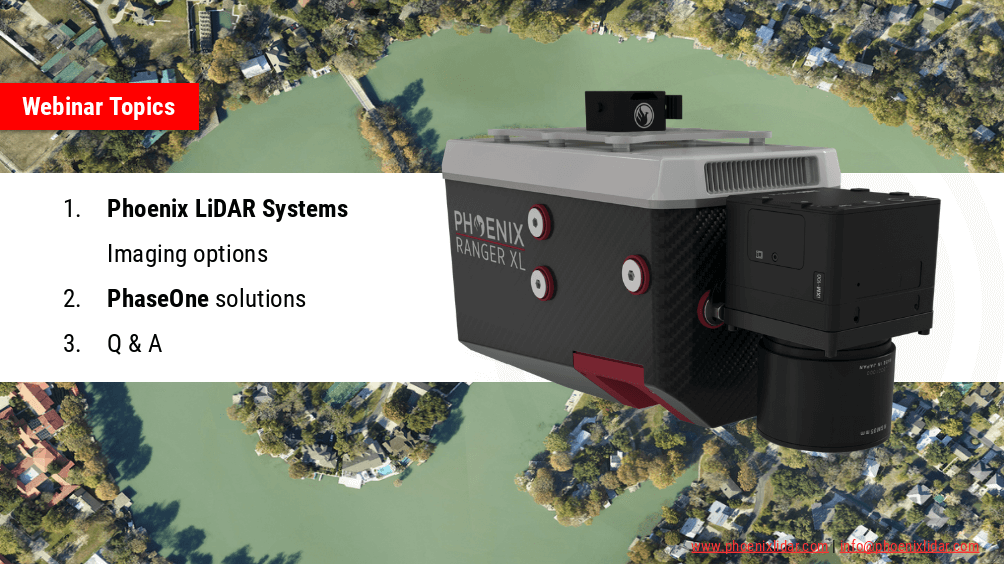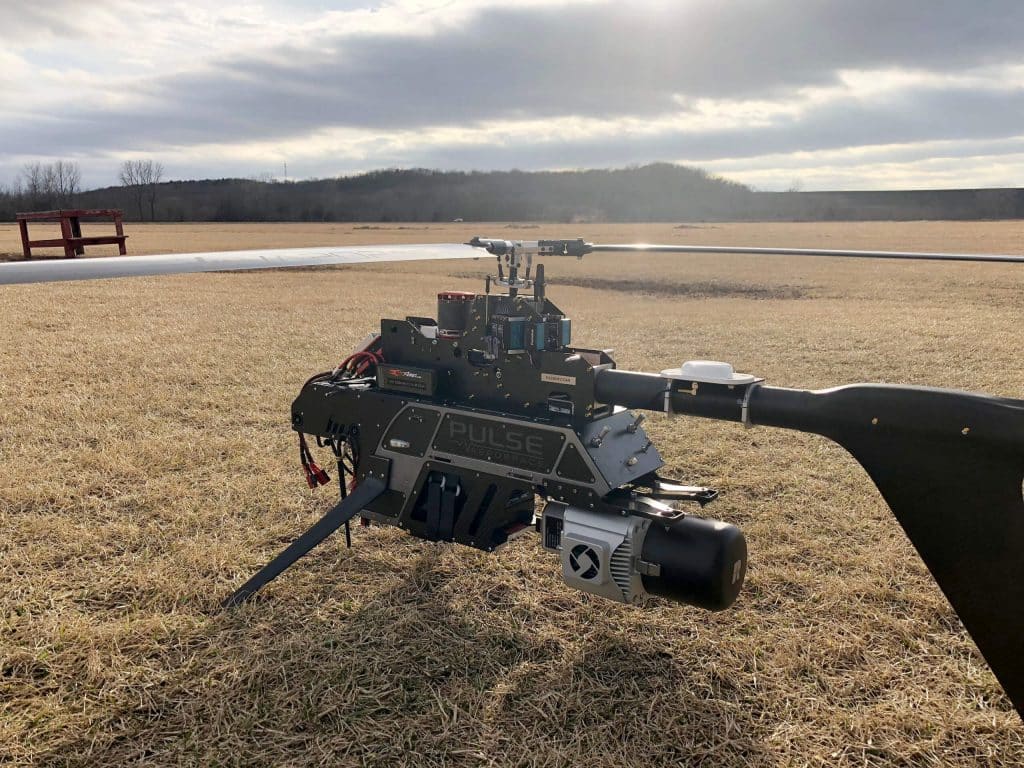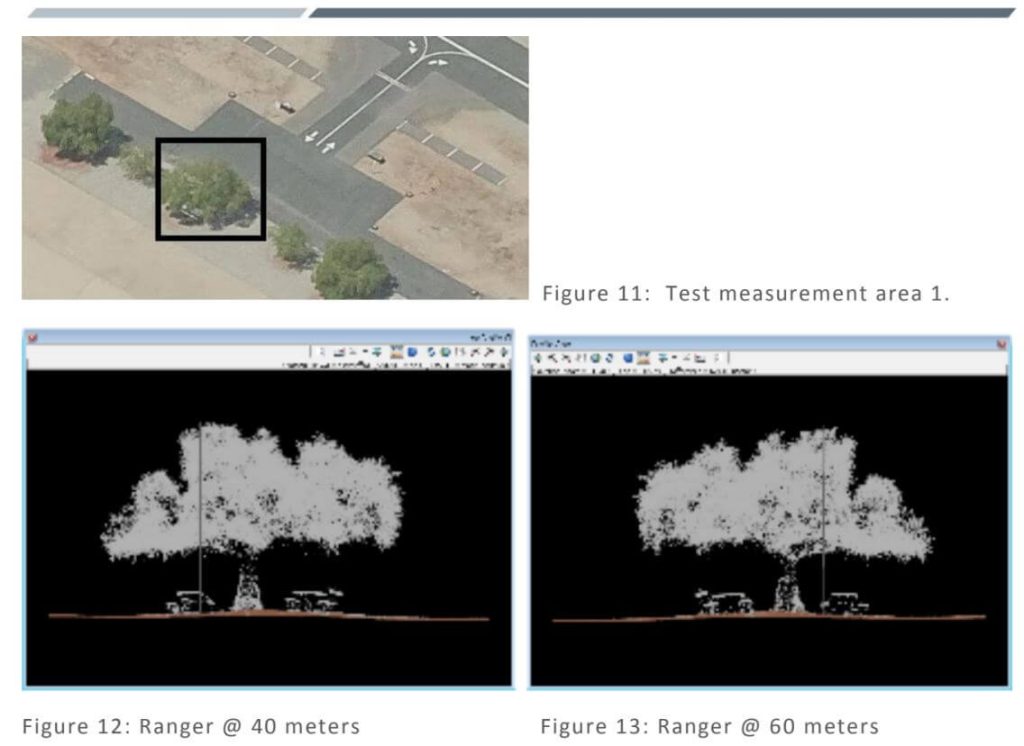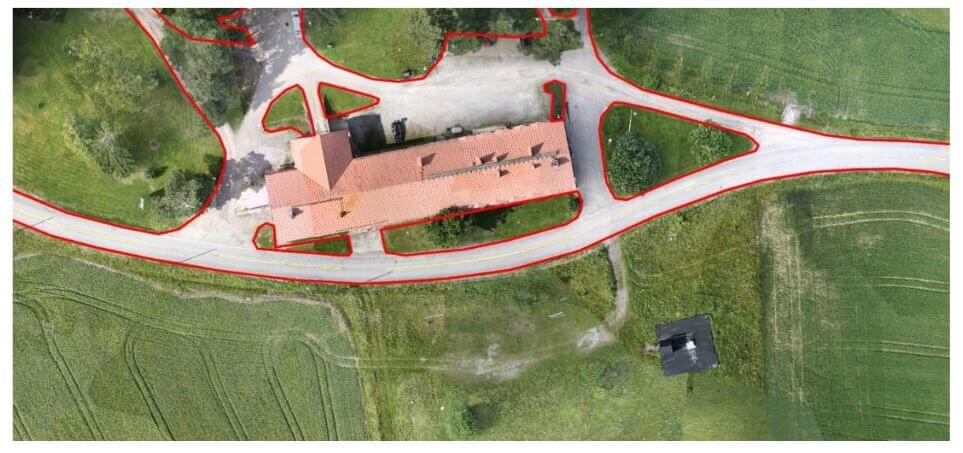Survey

Phoenix LiDAR Systems are capable of much more than point-clouds! In this webinar we team up with our premier imaging partner, PhaseONE to showcase how two of the world’s leading aerial surveying companies are synergizing the industry to push the limits of what’s possible. Also we’ll go over our other advanced imaging systems including dual-oblique, hyperspectral, thermal, NIR, and more!

We’re excited to announce the release of LiDARMill v2! LiDARMill v2 takes automated post-processing to the next level. In our recent webinar, we covered some of the new improvements and features including:
- Imagery Processing in LiDARMill
- Ground Control Reporting and Adjustments
- Robust Coordinate System Handling
- A Workflow Overview and Demonstration
- Multi-Mission Processing Support
- Advanced Point Cloud Filtering Options
- RGB Thermal & Fusion
- Accuracy Reporting
- Automated LiDAR and Camera Calibration Options
- Near-Real Time (NRT) Reference Station Positioning for Projects Requiring Less Than 24 Hour Turn-around Time
- Trajectory Post-Processing Without Reference Stations
If you have any questions or would like to learn more about LiDARMill v2, please don’t hesitate to get in touch. We’d be happy to help!

Over recent years, light detection and ranging (lidar) sensor technology has rapidly evolved and miniaturized. The reduced sensor size and weight have opened more doors for lidar sensors to be carried onboard unmanned aircraft systems (UASs). Compared with traditional airborne lidar mapping, UAS platforms offer more flexibility in terms of flight design and data collection, rapid response capabilities, and potentially cost at local mapping scales.
UAS-based lidar studies have primarily been focused on monitoring vegetation structure, simultaneous localization and mapping (SLAM) and so forth. A comparison between UAS and terrestrial laser scanning (TLS)-derived plant height for crop monitoring was made in. Descriptive statistics derived from polygon grids were analyzed and a correlation R2 = 0.91 was found in plant height derived from both methods. A lidar-based perception and guidance system was built on a helicopter to perform obstacle detection and avoidance, terrain following, and close-range inspection, and a high success rate was claimed by the authors.

Under task order G17PD01249: Alaska Critical Infrastructure UAV Airfield Obstruction Survey the Dewberry team was tasked to perform a test of the sensors that would be utilized in the survey of the Kiana and Nulato Airfields. As part of this testing our partners Compass Data and Phoenix LiDAR performed the acquisition and post processing of the LiDAR data using two (2)
sensors each flown at two different heights above ground. These parameters were designed in order to determine each of the following items:
General Ability to meet project specifications – These tests were used to determine if each sensor could meet the general project requirements for data formatting and LAS point cloud data. Items like smooth surface repeatability, relative accuracy, intensity values, and other were tested for each sensor and flying height.
LiDAR Density – Because we are utilizing a UAS based approach the intent was to determine what sensor and flying height would yield an appropriate density of points to determine the heights of obstructions.
Geometric Calibration – Tested to determine if each sensor was providing accurate and repeatable measurements from the two different flying heights.
Radiometric Testing – Tested to determine if each sensor was capable of identifying small or low-reflectance obstructions such as poles or antennas.
Measurement Consistency – This was tested across each of the 4 flights to determine how consistently the maximum elevation could be determined on the test apparatus as well as on trees and other vertical features in the AOI.
The following report documents the calibration testing performed by the Dewberry team.

Objective
The objectives of the test campaign were:
– evaluating the accuracy of point clouds from Phoenix Aerial Systems in a realistic survey mission scenario
– testing the performance of Terrasolid software running on top of MicroStation CONNECT Edition, for calibration and further improvement of the data
The data sets were acquired with a Camflight FX8HL UAS platform and pre-processed to a trajectory file and to a point cloud file with Phoenix LiDAR Systems software. [register below to download full whitepaper]